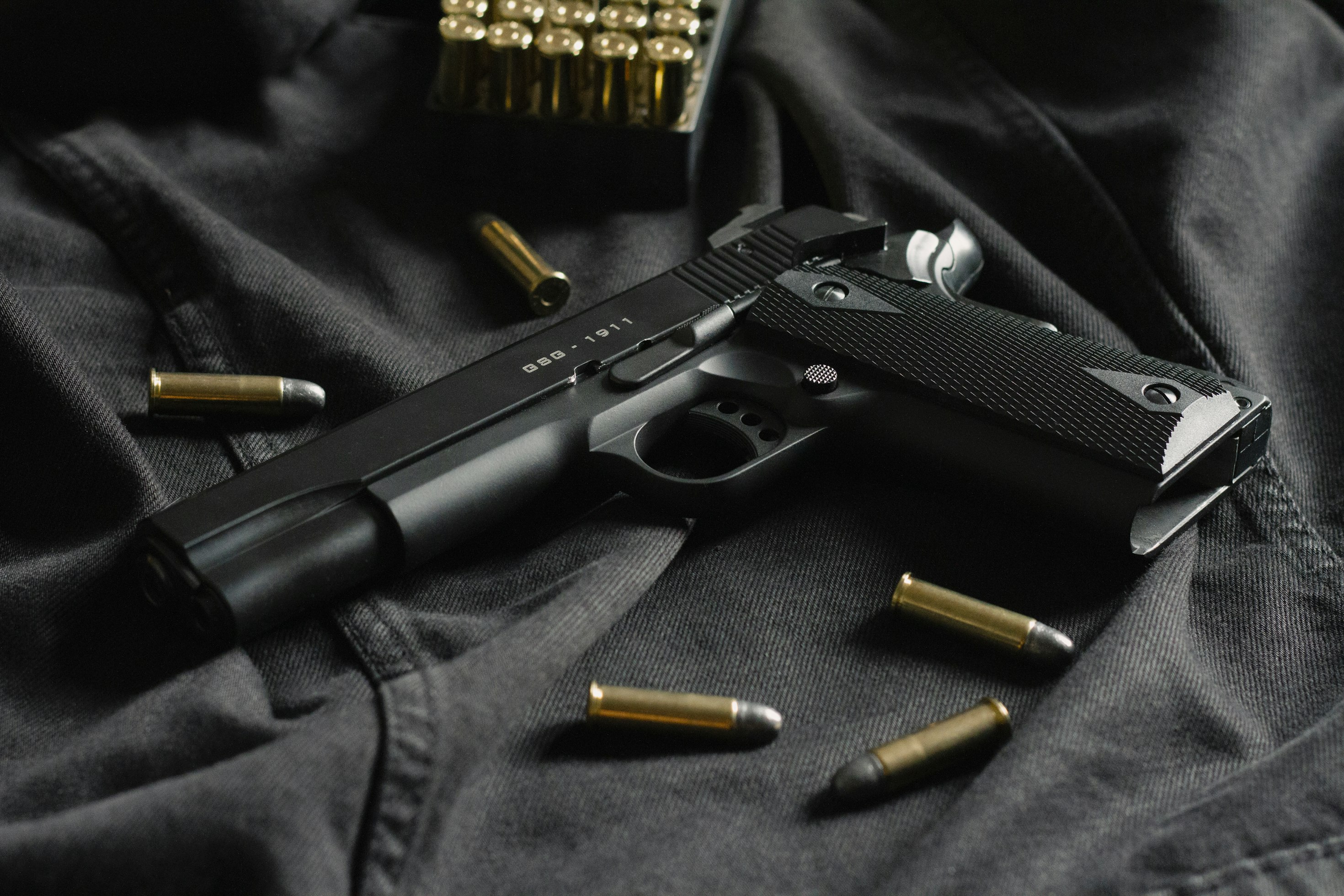
Concealed Carry for the Reluctant Jew: A Practical Guide to Safety and Comfort
Essential information about responsible concealed carry for beginners.
Let’s be honest: the idea of carrying a gun can feel uncomfortable. For many Jews—especially those of us who didn’t grow up around firearms—there’s resistance. The idea of carrying a firearm in everyday life can feel dangerous, paranoid, or (G-d forbid) goyishe. But more and more of us are starting to ask: What does it mean to be prepared to protect our communities, our families, and ourselves?
You’re not paranoid. You’re not violent. You’re not overreacting. You’re taking your personal safety seriously in a world that sometimes doesn’t take Jewish lives seriously enough.
Why Many Are Choosing to Carry
Carrying a firearm isn’t about fear. It’s about agency. It’s about refusing to be helpless if G-d forbid, something happens.
Yes, the odds that you’ll be in a life-threatening situation are low, but the reality is that antisemitic, life-threatening situations exist, especially for those of us who are visibly Jewish. And we know what it feels like when synagogues are targeted. We know what it feels like to look over our shoulder at the grocery store or on campus, wearing a kippah or a Magen David.
As one Jewish gun owner told Hadassah Magazine earlier this year:
“I don’t love carrying a gun all the time,” said Tarnove, who is in her early 60s and identifies as a political progressive. “It’s not my lifestyle. I don’t like to live that way.” But with family members present, “I wanted to be able to defend them, so I did bring a gun with me to shul.”
Concealed carry isn’t for everyone, but for some of us, it’s a practical mitzvah—taking responsibility for pikuach nefesh, the obligation to preserve life.
First: Know the Law
Before you even look at which gun to buy, understand the laws in your state. They’re not intuitive, and they change constantly.
- Most states are shall issue—if you meet the basic requirements (age, background check, training), you’ll get a permit.
- Some states are may issue, like Connecticut or Delaware, which means more hoops to jump through.
- And then there are the constitutional carry states, which don’t require permits or training. (Please, even if you live in one of those states, get trained anyway. You owe it to yourself and those around you.)
If you choose to carry concealed, USCCA Concealed Carry Map is your best friend. Bookmark it. Check it often.
Choose a Firearm
You want something that’s:
- Comfortable to wear
- Easy to shoot under stress
- Reliable every single time
A few models worth checking out:
- Sig Sauer P365XL – Compact, accurate, high-capacity for its size (10+1 rounds), and easy to conceal.
- Smith & Wesson M&P Shield Plus – Comfortable grip, excellent reliability, 13+1 rounds.
- Glock 19 Gen 5 – A classic. Slightly bigger, but extremely durable and widely supported with accessories and training resources.
Stick with a striker-fired, semi-automatic 9mm pistol. That means manageable recoil (easier to fire), straightforward operation (simpler to use and maintain), and sufficient stopping power (keeping the bad guys at bay).
Secure Yourself with a Holster
Your holster isn’t just an accessory—it’s your most important safety device besides the gun itself.
Look for:
- Retention (it won’t fall out)
- Comfort (you’ll actually wear it)
- Accessibility (you can draw quickly if you ever need to)
- Concealment (no one should ever know you’re carrying)
Here’s a couple of great videos on things to look for in a holster:
Recommended holster companies include:
- Dark Star Gear
- Henry Holsters
- JM Custom Kydex
- PHLster (especially their Enigma model)
Off-Body Carry
Carrying your firearm “off-body” (for example, in a purse or cross-body bag) is acceptable, but not recommended for those with kids or who are forgetful. Most experts recommend finding a way to carry your firearm on your person to keep it secured.
Recommended off-body carry bags include:
- Eberlestock Bando Bag
- Hill People Gear Belt Pack
- Vertx Everyday Fanny Pack 2.0
- Purses from GunGoddess or GTM
More info on carrying off-body can be found in these helpful guides:
Whatever you choose, train with it. Practice drawing (unloaded!) until it’s second nature.
When You Should Carry
Deciding when to carry isn’t just about whether it’s legal or physically comfortable—it’s about your values, your environment, and your sense of responsibility on any given day.
Ask yourself:
✅ Am I mentally clear and emotionally steady today?
✅ Am I going somewhere where the risk of needing to defend myself or others is higher than average—for example, a pro-Israel event?
✅ Does my destination allow firearms? Would my Rabbi be cool with a gun in shul?
✅ Am I prepared to act responsibly if something goes wrong—not just with the firearm, but with the aftermath?
✅ Do I have sufficient insurance if there’s been an accident, injury, or shooting?
If the answer is yes to all of the above, carrying might make sense for that day. But if you’re feeling rushed, distracted, or uneasy about the idea, it’s also okay to leave it in the safe. Carrying is a serious obligation, not a security blanket—and knowing when not to carry is just as important as knowing when to holster up.
Remember: Carrying Is a Practice, Not a Personality
You don’t need to become “a gun person” to carry. You don’t need to talk about it, post about it, or center your identity around it. This is about responsibility, not vibes.
If you choose to carry, do it with kavod—with intention, humility, and a commitment to learning.
Take the class. Go to the range. Learn about de-escalation. Most importantly: be the kind of person who prevents violence, not provokes it.